Day 1: Arrival in Entebbe & Mabamba Swamps (Optional)
Arrival in Entebbe as per your international flights and transfer to Papyrus Guest House.
Optional Extra: in the afternoon (departure from the hotel must be max at 14.30/15.00 hours) departure by car and local canoe to Mabamba Swamp, one of the best places for spotting the rare shoebill storks. Of course some fortune is needed but rarely does one leave the swamp without seeing one! Many other water birds have chosen this area as their home so birding is always very interesting. Enjoy a relaxing sundowner on Lake Victoria and then return to the Guest House.
• Accommodation: Papyrus Guest House (Garden Room)
• Meal Plan: Bed & Breakfast basis; Lunch & Dinner on own’s account
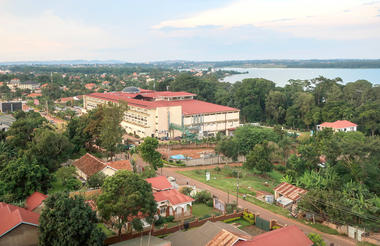
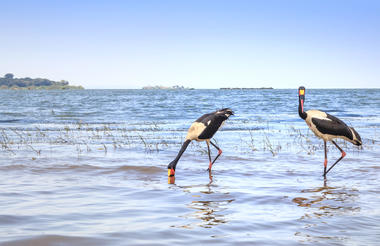
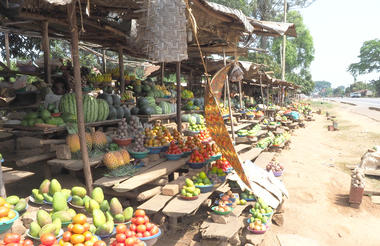
Day 2: Travel to Lake Mburo National Park
Enjoy an early breakfast travel to Western Uganda across the beautiful landscape of central Uganda made of rolling hills and cultivated terraces. Stop-over en-route at Mpambire, to watch drums being made using old traditional methods, and at the equator.
After lunch at the lodge, game drive in the park and 1-hour boat ride on Lake Mburu to admire the beautiful landscapes and in search of close encounters with the local fauna: bushbucks, bush duikers, crocodiles, hippos, plenty of water birds, etc.
The drive takes about 5-7 hours.
• Accommodation: Rwakobo Rock Lodge (Cottage) on the edge of the national park
• Meal Plan: Full Board
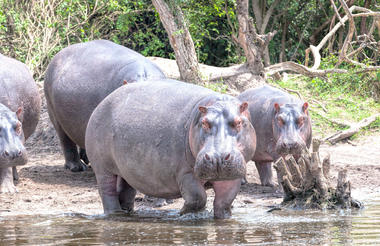
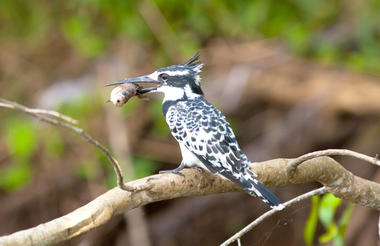
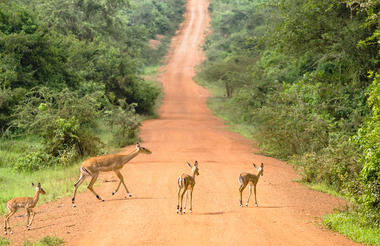
Day 3: from Lake Mburu N.P. to Bwindi - encounter with the Batwa
Enjoy an early morning game drive in the park, then continuation to Western Uganda across its rolling hills, tea plantations, and tropical rainforest and towards the end the majestic chain of the Virunga Volcanoes. Pass via the towns of Mbarara, Kabale and Kisoro before reaching Nkuringo, on the edge of Bwindi Impenetrable Forest.
In the afternoon stroll down to the Buniga Forest Trail Walk, an informative project run by USAID and the local Batwa community. The Batwa tribe was forced to leave their home in Bwindi Impenetrable Forest National Park in 1991 when it was declared a UNESCO Heritage site for gorillas only. They had been living in the forest as nomadic hunter-gatherers for millennia, in perfect balance with the flora and fauna around. Moving out and suddenly living in communities with a completely different way of life has proven to be a huge challenge. They now survive as best as they can and earn a living explaining their previous life in the forest and their rich heritage.
Continuation of the walk through the community to visit the traditional herbalist and the black smith.
The drive takes about 5-7 hours.
• Accommodation: Nkuringo Bwindi Gorilla Lodge (Private Cottage)
• Meal Plan: Full Board
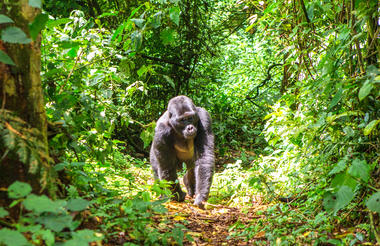
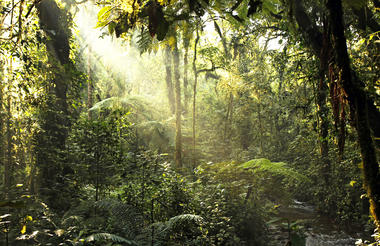
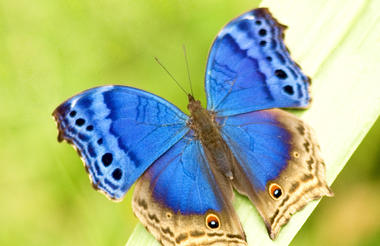
Day 4: Gorilla tracking in Bwindi Impenetrable Forest National Park
After breakfast, at around 7:45 am, with packed lunch and drinking water you will be transferred to the National Park Head Quarters for the briefing on the dos and the don’ts while with the gorillas. You then continue to the forest for the start of the actual gorilla tracking.
The beauty of this rain forest is spectacular. The area offers a dramatic, steeply forested landscape and is incredibly dense, but crisscrossed by numerous animal trails allowing access to tourists. The time taken and the terrain vary as per the movements of these great primates.The thrill of spending time observing these gentle and endangered giants is an awesome, exciting experience to be long savored. Many find it to be a rare and moving opportunity. The tracking can take place at Nkuringo or at Rushaga (1 hr drive from Nkuringo), as per the gorilla permits obtained.
Upon return, relax at the lodge and, for those who like, at 5.00 pm either stroll through the community center or drive up to the “Top of the World” - the name given to the football field, high up in Nkuringo which offers amazing views over the peaks and forests around Nkuringo. A great way to stretch your legs after the gorilla tracking and to enjoy a sundowner.
• Accommodation: Nkuringo Bwindi Gorilla Lodge (Private Cottage)
• Meal Plan: Full Board



Day 5: Hike across Bwindi Impenetrable Forest and Queen Elizabeth National Park
After a very early breakfast, drive along the Nteko Ridge till the junction of the Ivy River Trail with the forest (7 km) and then start the unforgettable hike across the forest (13km - 4-5 hours).
Bwindi Impenetrable Forest National Park is a vast unique natural reserve - monkeys, duikers, bush pigs and some of Bwindi's world renowned bird species plus many butterflies can be sighted. If you are very lucky you may even encounter gorillas! Once part of a much larger forest that included the Virunga Volcanoes in neighbouring Rwanda, the park is nowadays an ecological island within a sea of villages and farmland, its conservation importance is immense.
The emphasis of this activity is for your walking guide to share his knowledge of the forest with you, it is not simply an A to B hike. The trail is also an important footpath for local people, particularly on market days, travelling from Nkuringo and Nteko to Buhoma, on the northern boundary of the park. There is no road through Bwindi so vehicles driving between the two locations have an incredible 170 km bone jarring journey taking 6 to 8 hours.
Upon arrival at the park headquarters in Buhoma, meet with the vehicle and departure to Queen Elizabeth National Park. The southern area of Ishasha is notably recognized for its resident ‘tree climbing’ lions that are an exceptional attraction and one of the highlights of all safaris taken within the park. The lions can be spotted hanging on branches of huge fig trees whereas the Uganda Kob (which is the major food to these lions) graze on the plains below. The drive takes about 4 hours (182kms)
- Accommodation: Kasenyi Safari Camp (Safari Tent)
|• Meal Plan: Full Board
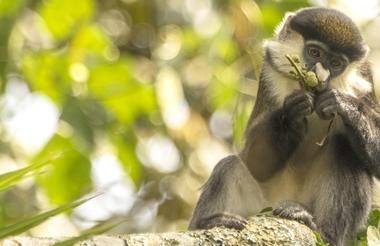
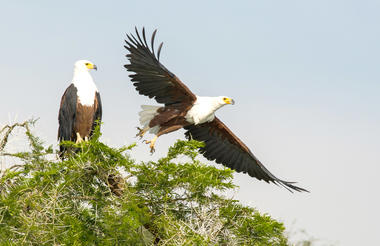
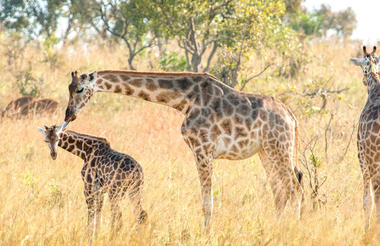
Day 6: Queen Elizabeth National Park - Kibale National Park
Morning dedicated to game drives in Queen Elizabeth National Park and to the boat trip on the Kazinga Channel - the 36 km waterway which connects Lake George and Lake Edward which allows special viewing of game and birds on the river banks, as the boat passes through pods of hippos. Crocodiles have only recently been seen in the Channel, they disappeared for 8,000 years after they were eliminated from Lake Edward by toxic ash from local volcanoes.
QENP is one of Uganda’s oldest parks being formed officially in 1952. The park was initially known as ‘Kazinga National Park’ before it was renamed in 1954 to commemorate a visit by Queen Elizabeth II of Great Britain. QENP hosts 95 species of mammals, more than any other park in Uganda, and 619 bird species, the second highest of any park in Africa – the sixth highest of any park worldwide.
In the afternoon continuation to the lodge in Kibale National Park via the town of Fort Portal. Time permitting late afternoon trek to the ‘Top of the World’ to enjoy fantastic views of the Rwenzori Mountains, crater lakes, tea plantations and local villages.
The drive takes about 3hours (180kms)
• Accommodation: Primate Lodge (Luxury Cottage)
• Meal Plan: Full Board



Day 7: Chimpanzee tracking and Bigodi Wetland Sanctuary
Morning chimpanzee trek. The density and diversity of primates in Kibale National Park is the highest in the whole of Africa. The most well-known of its 13 species are the chimpanzees, our closest relative. Kibale’s 1450 chimpanzee population of this threatened primate is Uganda’s biggest. Additionally, Kibale is home to the uncommon I’Hoest’s monkey as well as East Africa’s biggest population of the endangered red colobus monkey. The black & white colobus, red tailed monkey, blue monkey, olive baboon, grey cheeked mangabey, bush baby and potto are among the other primates.
Afternoon excursion to the Bigodi Wetland Sanctuary, a great example of a community-based approach to the natural resources management which can be of good economic benefit to the local residents living within this area and to the tourism industry. This sanctuary is a paradise for bird watchers and skilled birders can spot up to 50 new species on a bird list. At today 138 species of birds have been recognized within the Bigodi Wetland Sanctuary, among which the Great Blue Turaco. Bigodi is also regularly visited by a diverse number of primate species from the nearby national park.
• Accommodation: Primate Lodge (Luxury Cottage)
• Meal Plan: Full Board



Day 8: Kibale Forest and travel to Entebbe
After a relaxed breakfast departure back, with a lunch break en-route. In the afternoon continuation to Entebbe where arrival is expected around 17.00. Transfer to the airport in time for the evening flight out. End of services.
The drive takes about 5 - 6 hours (315 km).
• Meal Plan: Breakfast, Packed Lunch; Dinner on own’s account.
We recommend an overnight stay in Entebbe, or a very late / evening flight.





